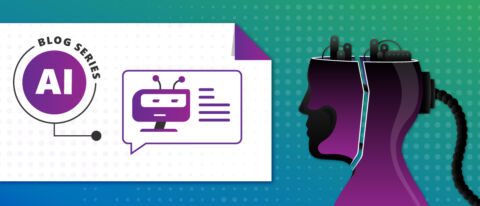This article is the sixth and final post in our series on AI. You can check out the others below!
- How AI is Used to Surface Content (Office Graph)
- Web 3.0: How We Got Here and Why it Matters
- How AI Automation and Tasking Helps Us Collaborate Better
- Mixing Reality: The Immense Potential of AR, MR, & VR
When you call into your credit card company you are usually prompted by a formal voice to input your request in a few words. This airy attempt at a pleasant-sounding voice is a chatbot designed to get you to the desired result in the quickest and most natural way possible. While many of us probably have bad memories of interacting with such systems, this solution has rapidly increased in quality and overall positive customer outcomes.

Chatbots have proliferated to many different services beyond credit card hotlines. Siri on your iPhone, OK Google on Android and tower devices, and Amazon’s Alexa are all such verbal chatbots. As the Internet of things (IoT) grows, users will interact with machines from refrigerators to cars to washing machines in natural chatty ways. These solutions use Natural Language Processing techniques to interact with people.
Workplaces will increasingly use chatbots to get specific tasks done for users, such as setting up meetings, searching for flights, combing through a large data set, or enabling services for immediate end user consumption.

A good example of how a chatbot can help with collaboration is via distributed teams. Chatbots can watch the status and activity of users and where they are interacting with others, such as a smartphone versus a PC, and see that users are interacting on the go.
This can enable the person on the go to respond handle tasks and events quickly so they are not on their phone as much in front of customers. This sort of proactive monitoring can help prevent bottlenecks when someone is out of the office or unavailable, and can enable users to respond rapidly via standardized actions.
I never knew chatbots could be so useful. Check out this article: Click To TweetActionable email is another example of this human-chatbot relationship. Actions and responses can be enabled with one click, with AI and chatbots monitoring such actions to help enable quick and prepared responses so work does not have to be repeated by a person.
Chatbots can also act as intermediaries between systems which usually never talk to one another. For example, some companies prefer to use Slack, others use Teams, some classic email. Chatbots can be a unified service for all these systems via API calls which can push information and also help determine certain requests rapidly between disparate systems. Azure AI Chatbots can do this via channel services when developers enable such channels for requests and chats in these systems.

For IT Service Staff, chatbots can assist helpdesk employees and administrators sift the requests from users while also routing users to wikis or chatbot-enabled tasks such as resetting a password or requesting access to a certain application without human interference.
For security, chatbots—because they are focused on interacting with users—can help sift between actual users attempting to get something done and potential malicious attempts to access a system or create chaos. The more users use chatbots, the better the programs become at understanding humans and requests. As a result, the actions available to get something done grow.
Best Practices Guide: Records Management for the Digital Era
Employees and customers of various organizations have made their concerns known about chatbots, but this relationship has only gotten better with such continuous feedback. Companies of all sizes have begun to test out chatbots, especially financial services and travel companies. We will undoubtedly see more interaction on the user level expand as network effects help shape this interaction point between humans and computers.
Like what you read? Be sure to subscribe to our blog for more great tech content

